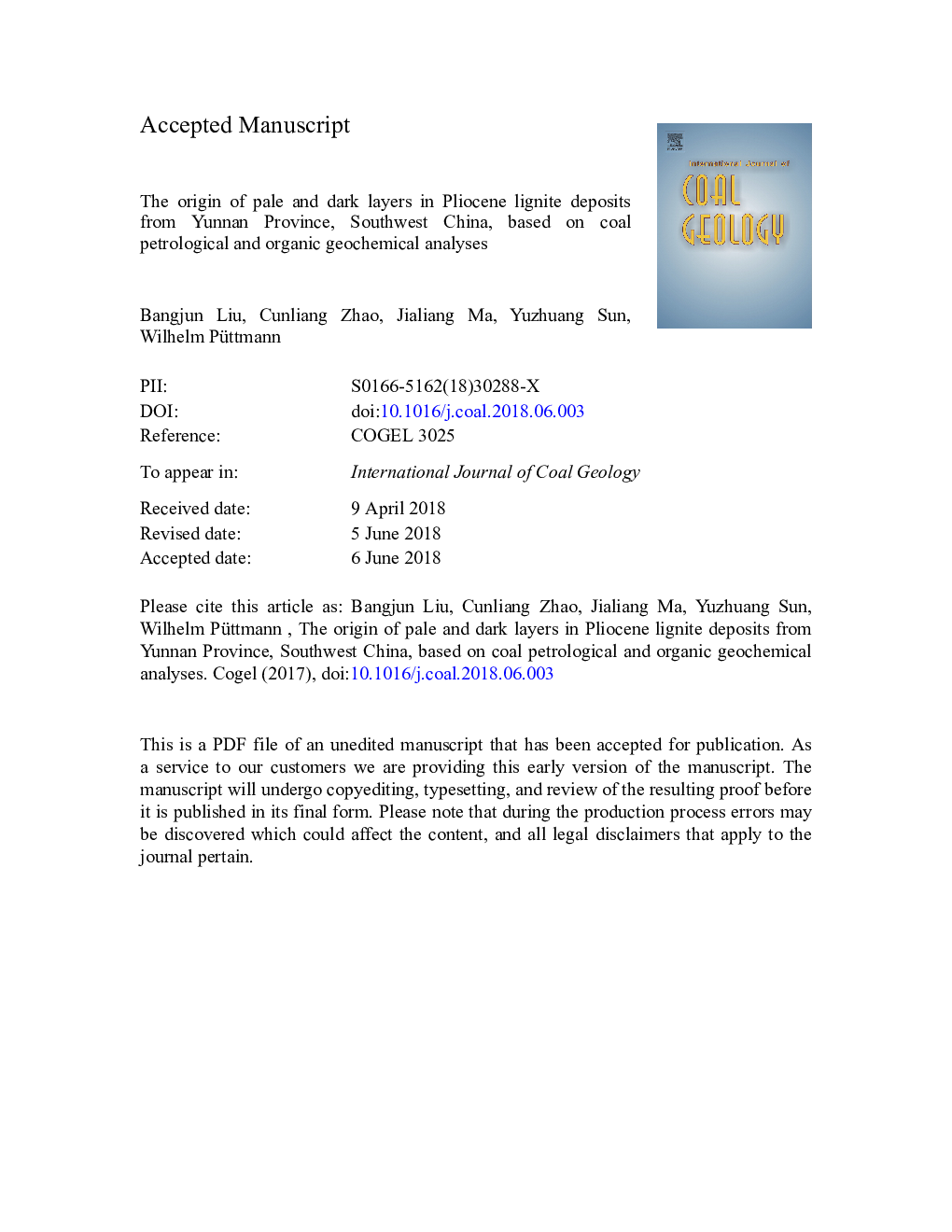| کد مقاله | کد نشریه | سال انتشار | مقاله انگلیسی | نسخه تمام متن |
|---|---|---|---|---|
| 8123303 | 1522508 | 2018 | 40 صفحه PDF | دانلود رایگان |
عنوان انگلیسی مقاله ISI
The origin of pale and dark layers in Pliocene lignite deposits from Yunnan Province, Southwest China, based on coal petrological and organic geochemical analyses
ترجمه فارسی عنوان
منشاء لایه های رنگی و تاریک در رسوبات ریگنوس پیلوسان از استان یوننان، جنوب غربی چین، بر اساس تجزیه و تحلیل ژئوشیمیایی زغال سنگ و سنگ آهک
دانلود مقاله + سفارش ترجمه
دانلود مقاله ISI انگلیسی
رایگان برای ایرانیان
کلمات کلیدی
موضوعات مرتبط
مهندسی و علوم پایه
علوم زمین و سیارات
زمین شناسی اقتصادی
چکیده انگلیسی
With respect to the biomarker composition, the high concentrations of long-chain (C27-C31) n-alkanes in both pale and dark lignites are typical characteristics for the predominance of higher terrestrial plants. Significant concentrations of mid-chain n-alkanes (n-C21-C25) were detected preferentially in the dark lignites, suggesting that aquatic plants might also have contributed to the plant community during the formation of the dark layers. The content of diterpenoids, and the average ratio of diterpenoids to the sum of diterpenoids and triterpenoids (Di-/(Di-â¯+â¯Tri-terpenoids)) are higher in the pale lignites than in the dark lignites. This indicates that gymnosperms made a crucial contribution to the plant community during the formation of the pale lignites. In the dark lignites, triterpenoids are generally far more abundant than diterpenoids, which suggests that the dark layers were overwhelmingly formed by angiosperm plants. This is consistent with lower C/N ratios in the dark lignite layers (av. 40.8) compared with the pale lignite layers (av. 60.6). Higher microbial activities in the pale lignites than in the dark lignites are reflected by the higher concentration of hopanoids and 17α,21β-homohopane (22R) in the pale lignites.
ناشر
Database: Elsevier - ScienceDirect (ساینس دایرکت)
Journal: International Journal of Coal Geology - Volume 195, 1 July 2018, Pages 172-188
Journal: International Journal of Coal Geology - Volume 195, 1 July 2018, Pages 172-188
نویسندگان
Bangjun Liu, Cunliang Zhao, Jialiang Ma, Yuzhuang Sun, Wilhelm Püttmann,
